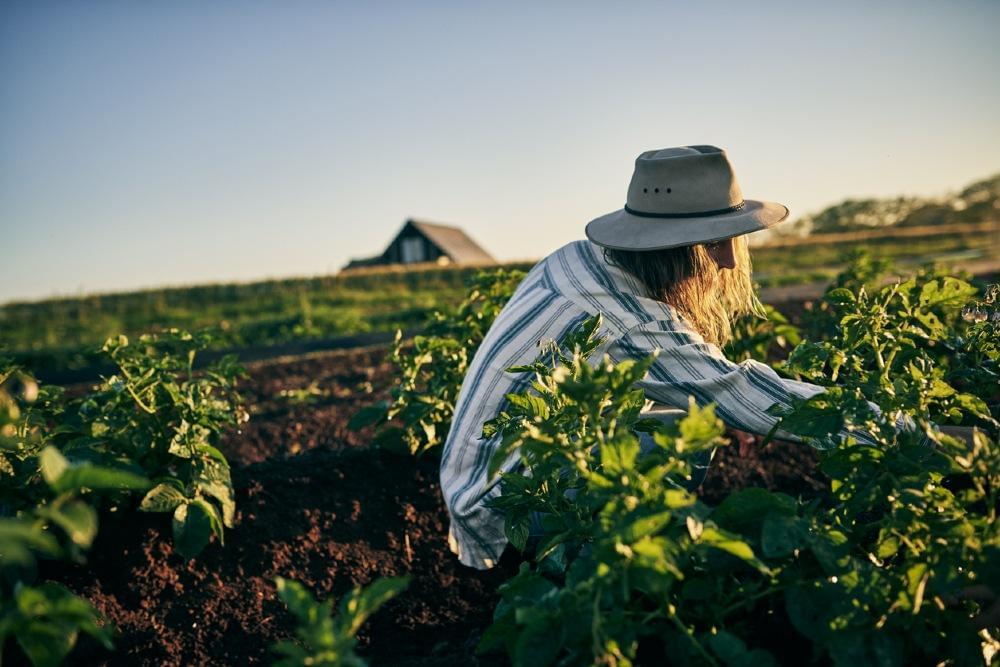Australian property market update - January 2020
If you are surprised to see that we are already well into February, you are not alone! This means it is time for our monthly property market update for January 2020.
With the first month of the year firmly in our collective rearview mirror it's time to crunch the data, and see how national property values are faring, which capital cities are leading the chase and if regional markets are going to be impacted by the catastrophic summer bushfires.
Whilst the loss of life, property and biodiversity are tragic, there is also an economic cost to be quantified as tourism to the areas dries up and buyers remain wary.
Bushfires and property values
Analysts believe there could be a long term impact on bushfire prone areas. S&P Global Ratings believe, "...housing prices might drop and the ability to sell property could be adversely affected should the area be deemed less desirable or of higher risk to buyers’.
realestate.com.au data also shows that median house prices are affected by bushfires, but performance varies significantly over the long term.
"According the S&P Global Ratings, house prices in bushfire prone areas might drop and the ability to sell property could be adversely affected"
On a positive note their analysis also indicates that house prices in bushfire impacted areas can recover and grow at a faster rate than other regions - partly due to the fact that rebuilt properties are new, which improves the quality of housing stock in the area.
Let’s start our review with a look at how national property values performed over the past month.
National property values: January 2020

Houses
$557,403
Monthly change: +1.0%
Units
$514,229
Monthly change: +0.4%
January saw markets continue their upward trend, albeit at a slower pace, with CoreLogic’s national home value index up by 0.9% over January. This takes the annual growth rate to +4.1%, the fastest pace of growth for a twelve month period since December 2017. Nationally, housing values recovered +6.7% since bottoming out in June 2019, but the national index is still -2.2% below the October 2017 peak.
The median house price across the country now sits at $557,403, up +1.0% on December, with the unit median now at $514,229, marginally up over the same timeframe.
The feelgood factor that started in Sydney and Melbourne has now spread to every capital city and most regional markets, except South Australia. Sydney is the best performing capital city up +5.6%, while Darwin continues to struggle down -1.6% and parts of Tasmania lead the surge for regional markets.
CoreLogic also identified a two tier market, where Sydney’s top quartile is up +10.0% over the past year, compared with a +3.4% growth for properties in the lower quartile. The same trend is recorded in Melbourne, where the top quartile is up +11.5% and the lower quartile is up +5.6%.
Latest property news: Sydney and regional NSW
Houses
$994,300
Monthly change: +1.5%
Units
$750,116
Monthly change: +0.0%
With the Sydney market up +1.1%, this is half the growth it experienced over December, but it still leaves it up +5.6% for the quarter and 7.9% for the YTD.
In terms of specific locations performing strongly, Baulkham Hills & Hawkesbury posted double figures for the YTD, up +13.5%, and the Inner West and Ryde also up +12.7% and +10.3% respectively. Sub regions in NSW doing well include the Murray +3.1% and the Capital region +3.2%.
Read more:
- Best suburbs to invest in Sydney 2020
- Best regional NSW areas for property investment 2020
- Best suburbs to invest in Newcastle and the Central Coast 2020
- Best areas to invest in Wollongong, Illawarra and South Coast 2020
Latest property news: Melbourne and regional VIC
Houses
$798,671
Monthly change: +1.4%
Units
$580,805
Monthly change: +0.7%
Melbourne may not have grown as fast as Sydney over the month, but it is up +8.2% over the YTD and is just -1.2% off its 2017 peak. The Inner East posted the strongest data for the city, up +16.2% for the YTD, while Warrnambool and the South West region were the pick of the sub regions, up +5.4%.
Read more:
- Best suburbs to invest in Melbourne 2020
- Best regional VIC areas for property investment 2020
- Best areas to invest in Geelong, Torquay and Lorne 2020
Latest property news: Brisbane and regional QLD
Houses
$547,860
Monthly change: +0.7%
Units
$383,573
Monthly change: -0.6%
Brisbane is also in the black marginally up +0.5% overall for the month, and +2.0% for the quarter for a median dwelling value of $499,691. Unit prices are still softer than houses, with oversupply still having an impact in some metro postcodes.
Otherwise the Sunshine Coast (+3.0%) and Goldie (+3.1%) are currently offering better growth prospects than most other Queensland locations.
Read more:
- Best suburbs to invest in Brisbane 2020
- Best regional QLD areas for property investment 2020
- Best suburbs to invest on the Gold Coast in 2020
- 5 best areas to invest on the Sunshine Coast
Latest property news: Hobart and regional TAS
Houses
$512,899
Monthly change: +0.9%
Units
$398,205
Monthly change: +0.8%
Hobart, like most other capital cities is picking up the pace, up 0.9% for the month - the highest growth of the ‘lesser’ capitals. Its quarterly performance is a respectable +3.4% which also brings the city back to its former peak, for a median dwelling value of $481,665.
Regional areas of Tassie, such as Launceston and the South East are back in favour with interstate buyers, advancing +7.9% and +7.4% respectively.
Read more: Best suburbs to invest in Hobart 2020
Latest property news: Canberra and the ACT
Houses
$701,561
Monthly change: +0.3%
Units
$441,400
Monthly change: +0.1%
The nation's capital was a little livelier over January, up +0.3% for the YTD for a median dwelling value of $630,078, with houses advancing at a faster pace than units. According to CoreLogic data the market here is back at its peak, having advanced +3.1% over the YTD
Read more: Best suburbs to invest in Canberra 2020
Latest property news: Adelaide and regional SA
Houses
$474,273
Monthly change: +0.2%
Units
$324,617
Monthly change: +0.5%
Adelaide continues where it left off in 2019 with marginal gains in January +0.2% to finish +1.3% for the quarter and a median dwelling value of $437,411. Parts of the city are negative, with Central suburbs down -0.9% and the West -1.6%, while the regional Barossa is also a negative -2.1%.
Overall though Adelaide has recovered its recent losses and is back to its peak values.
Read more: Best suburbs to invest in Adelaide 2020
Latest property news: Perth and regional WA
Houses
$456,803
Monthly change: +0.1%
Units
$352,556
Monthly change: +0.3%
Perth is finally in the black again, up +0.1% in January overall, which takes it into positive territory for the quarter +0.4%. It does still leave it down -5.7% for the YTD, but it also does break a rather extended slump of over five years.
CoreLogic also notes that housing values in the WA capital remain -21.3% below their 2014 peak. Inner Perth appears to be copping the worst of it, down -6.3%, while regional Mandurah is struggling down -8.9% for the YTD.
Read more: Best suburbs to invest in Perth 2020
Latest property news: Darwin and regional NT
Houses
$469,834
Monthly change: +0.6%
Units
$275,636
Monthly change: -1.1%
There is still no good news for Darwin investors and property owners, even though January saw a marginal +0.1% rise, the market is down -8.1% for the YTD. The NT capital still has the most affordable median property values at $390,143, though prices are -31.8% below their peak.
Read more: Best suburbs to invest in Darwin 2020
Rents and rental yields
Nationally rents rose +0.5% in January to +1.3% for the YTD, but is still characterised by CoreLogic as, ‘generally weak across most markets’.
Hobart is still the capital with the most demand for rental properties, with rents up +5.8% in the YTD while Darwin has the highest rental yield (5.8%) and Sydney the lowest (3.0%).
What does all this mean and what can we expect?
So what do we read into the small loss of momentum in markets over January?
CoreLogic head of research Tim Lawless, believes seasonality is a factor - given most housing markets virtually shut down over the festive season. He also believes that a number of factors could dampen growth prospects in the months ahead.
The number one concern is that affordability is once again becoming an issue for prospective buyers in Sydney and Melbourne, as values here return to within touching distance of previous highs. He also points out that as stock levels increase in the coming months, this could put further pressure on price rises.
"The number one concern is that affordability is once again becoming an issue for prospective buyers in Sydney and Melbourne, as values return to track previous highs"
It’ll also be interesting to see if regional markets, which tend to track capital cities, will follow this trend. While metro markets started their recovery in the middle of 2019, regional markets have been fairly muted. Overall they are up just +0.4% over the YTD, while the combined capitals have advanced +5.2% over the same timeframe.
Read more: National property market forecast 2020








